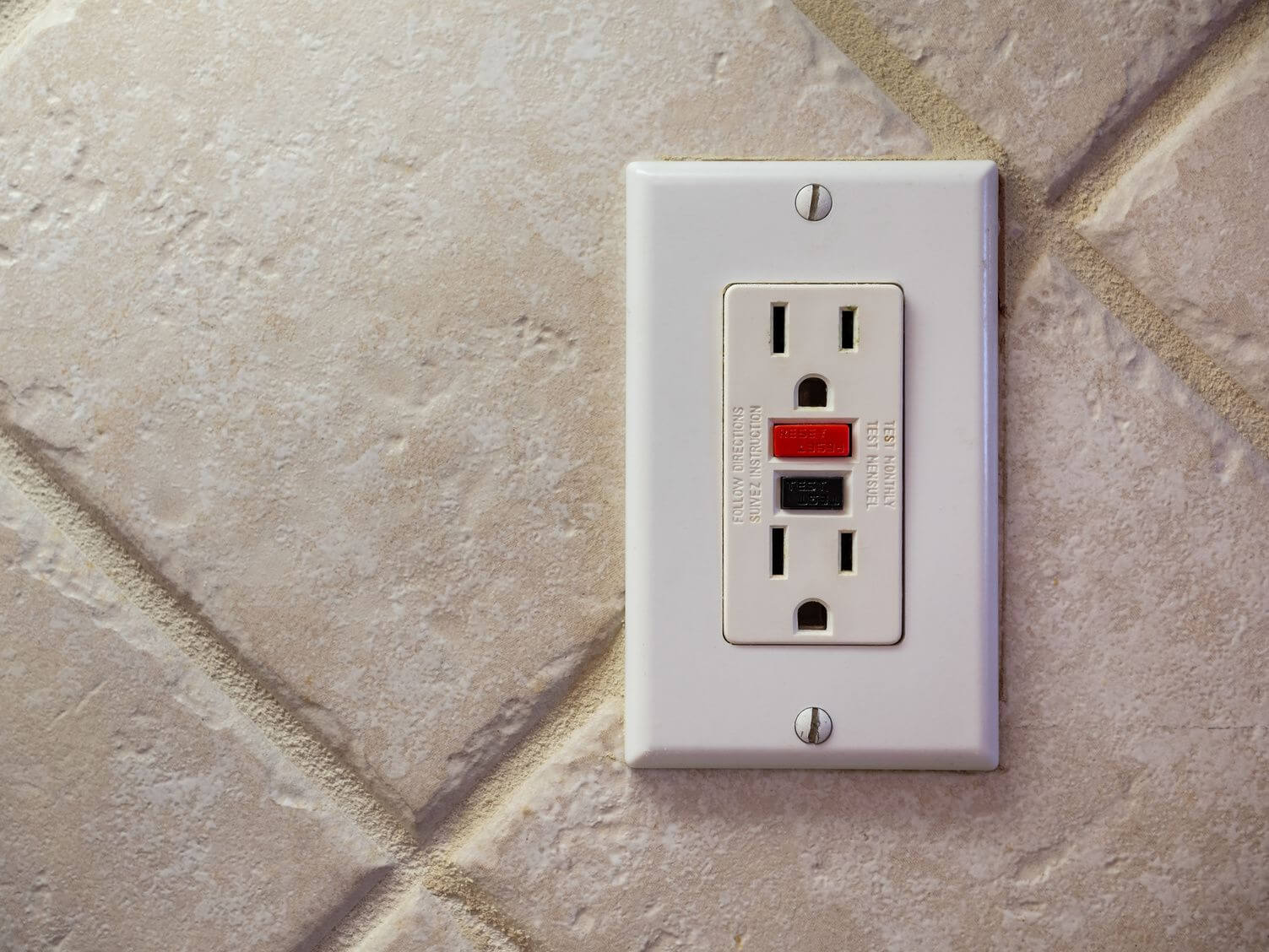7 Factors to Consider Before a GFCI Installation
- Electrical
- Miscellaneous

Many people don’t understand how electric circuits work, and the equipment used to protect your family from an electric shock or fire. This is done through a ground fault circuit interrupter (GFCI), which is one of the most important pieces of equipment in a home that can save your life. For any areas that have both water and electricity, a GFCI is a must, and is required by law according to the National Electric Code (NEC).
What does a GFCI do?
A GFCI detects any irregular current flows and shuts off the power before things become serious. Without a GFCI, there is a heightened risk, putting you and your family at risk. Without a GFCI in place, property values are lowered due to the high risk of electrical issues being present. There are three main advantages to having GFCI outlets:
- Preventing Shock
GFCI outlets prevent electrocution and shock. The built-in sensor monitors the change in electric flow and will shut down when there is a problem. Although a little more expensive than standard outlets, it is well worth the cost.
- Preventing Fire
GFCI outlets detect ground faults. This aids in preventing electrical fires. Coupled with the assistance of electrical fuses, the likelihood of an electrical fire occurring is very slim.
- Prevention of Appliance Damage
As time passes, there are instances where electric currents can damage certain appliances within home. This is one reason why computer hard disk drives fail or shut down. When using a GFCI, when leaks are detected, the circuit will shut down. This helps protect your appliances and equipment from being damaged.
What is the difference between a GFCI and a circuit breaker?
Circuit breakers are designed to protect an electrical circuit from damage caused by overload or short circuiting. It can be reset automatically or manually to continue operation. They are designed in a number of sizes – consider it a mechanical fuse. A GFCI senses a leak in the circuit, usually before the circuit break. Although both interrupt electrical shortages, the GFCI is more sensitive, identifying other places that have water usage.
Where should you install a GFCI?
Before installing a GFCI, it is best to know where it should be placed. Because GFCIs detect electrical currents near water, it should be installed in an area that is subject to moisture. This includes bathrooms, kitchens, laundry rooms, garages, and other places where moisture can collect.
How do you test a GFCI?
If you have a GFCI that was installed prior to 2006, you need to test it with a circuit tester. You plug it into the outlet and push the test button. If the power goes off, the GFCI is still working. Pressing the reset button will restore power. If the power does not go off, that means the GFCI is no longer working. Newer GFCIs give you an automatic warning when they are no longer working, and the power will shut off on its own. This indicates it needs to be replaced.
How does a GFCI differ from an AFCI?
An Arc-Fault Circuit Interrupter (AFCI) outlet is designed to recognize arc faults, which are in the wiring. A GFCI protects people from electric shock. Faulty wiring in arc-faults can be a result of humidity or heat, extended mechanical or voltage stress, or age. When wires become damaged by nails or other punctures, animal bites, or bent wires that cause cord damage, this can result in arc-faults.
How do you use a temporary GFCI?
A temporary GFCI is used to provide electricity for areas that need temporary use. This is done by installing a GFCI breaker that should be tested on a weekly basis to ensure there are no hazards that could cause electric shock or fire. There are certain rules to follow for temporary installation, and additional guidelines to be followed for installation removal.
When can you use temporary GFCIs?
You can use temporary GFCIs when you have certain activities going on that require electricity, but can be removed after completion of the purpose. This includes remodeling, demolition of buildings, developmental work, emergencies, tests, decorative lighting for events, and other instances where temporary electrical power is needed. Temporary GFCI installation has time limits on the amount of time it can be used, based on the use. Portable GFCI devices are also widely used on job sites, for portable generators, vending machines and more.
Knowing these seven factors on how and why GFCIs are important can provide peace of mind, knowing the risk has been lessened and will keep your family comfortable and safe. Now you are aware of what is required, whether installing yourself or using a contractor. This will assist in making sure your home is protected the right way.
For More Information on All Things GFCI Installation, Call NSHEC Today!
Contact North Shore Home Energy Today for the Best in Electrical Work!
Check Out Our Current Specials!
Read The Great Things That Your Neighbors Are Saying About NSHEC.
gfci installation gfci installation





